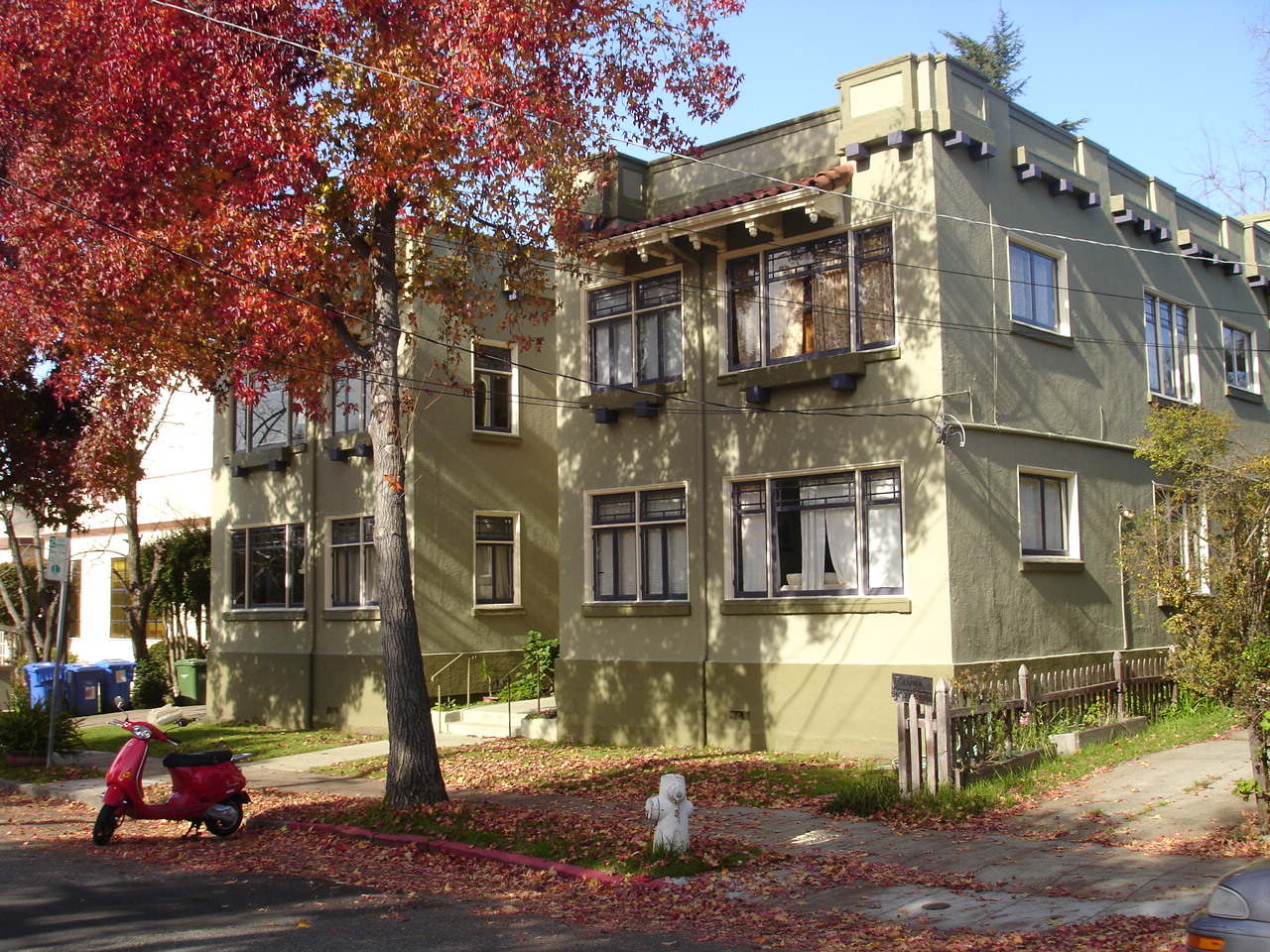
Regional policymakers see “missing middle” types of housing as vital to addressing the Bay Area’s housing crisis. Photo courtesy of Opticos Design.
In July of 2017, the Association of Bay Area Governments (ABAG) and the Metropolitan Transportation Commission (MTC) adopted Plan Bay Area 2040, a long-range blueprint to guide transportation investments and land-use decisions in the nine-county region. Advocacy groups who participated in the plan’s development expressed concern that it didn’t do enough to address housing affordability, and asked the agencies to identify ways to help low- and middle-income households avert displacement risk and gain better access to jobs.
In response, ABAG and MTC assembled CASA, or the Committee to House the Bay Area. It’s a task force led by three co-chairs and comprised of representatives from labor groups, large technology companies, affordable housing developers, and the government and nonprofit sectors, among others. Their work culminated last month with the final approval of a “compact” consisting of 10 policy recommendations for housing preservation, production, and protection.
“The compact was set up and conceived as a way of bringing together what had been disparate issues related to the housing affordability crisis in the Bay Area,” said Ken Kirkey, director of integrated planning for MTC/ABAG.
ABAG’s executive board voted 21 to 9 on January 17 to authorize its president to sign the compact, following an MTC board blessing the month prior with a 14-3 vote. A great deal of debate preceded these votes. In letters sent to MTC at the end of 2018, several city officials expressed concern that CASA’s effort lacked input from smaller jurisdictions and that proposed zoning changes could pre-empt local control over development.
The compact “denies the fact that cities have put thousands of hours into writing their overall general plan, their housing element, and the provisions for environmental protection,” said Susan Kirsch, founder of Livable California, a group that supports local community planning.
Nonetheless, CASA members offer minimum zoning near transit as one of their 10 recommendations to get the ball rolling on housing affordability. Identified in the compact as Element #5, the recommendation is intended to provide cities the ability to add housing near transit by producing an inclusive mix of “missing middle” types such as duplexes and fourplexes. The CASA compact’s overall production target is 35,000 units a year, with 14,000 being affordable to lower-income households, and 7,000 being affordable to moderate-income ones.
There is a “strong focus on trying to get more of the development that happens to not be just affordable housing, but also inexpensive housing near transit,” said Stuart Cohen, a CASA steering committee member and the outgoing executive director of TransForm, a transportation advocacy group.
Specifically, Element #5 sets minimum zoning on residential, commercial, and institutional areas to allow missing middle housing types up to 36 feet tall, or roughly three stories, in neighborhoods where there is high-quality bus service. Minimum zoning jumps up to 55 feet tall (or 75 feet with a density bonus) for midrise housing huddled around major rail stations and ferry terminals.
Element #5 is important because it melds transportation and land-use planning to advance home rental and buying opportunities. It also folds into larger policy goals aimed at reducing traffic congestion and long commutes, as well as greenhouse gas emissions.
“To the people around the CASA table, [upzoning] felt like a reasonable next step to accomplish the CASA compact goals that are imperatives, not just in the Bay Area but statewide,” said Denise Pinkston, CASA’s production workgroup moderator.
Additionally, Element #5 stipulates that when a major transit stop is located in or next to a “sensitive community” with low-income residents, density increases could be deferred for three years while the individual city develops a community plan to divert potential displacement risks.
Other housing production elements in the 10-part compact call for a more streamlined review process, expedited approvals, and builder incentives.
Some portions of Element #5 are familiar, too. It lists 2018’s Senate Bill 827 (Wiener) as a reference. The bill aimed to create denser development around transit, but was killed in committee. State Senator Scott Wiener later introduced similar density-driven legislation, The More HOMES Act (SB 50), with some new provisions to confront housing shortages experienced throughout the state.
In the Bay Area, a comparison of job and housing data shows what residents are experiencing. While the Bay Area has added 722,000 jobs since 2010, it’s only constructed 106,000 housing units, according to CASA data. Nearly 190,000 workers commute from outside the nine-county region to Silicon Valley business parks and the Tri-Valley, while more than 220,000 East Bay residents cross toll bridges to the Peninsula daily.
“The housing crisis is real and impacting residents, making it in many cases too expensive to live in the city or difficult to find housing, whether it’s a rental or those who want to get into the housing market,” said Robert Merkamp, zoning manager for the City of Oakland.
The City of Santa Rosa was already experiencing “a housing crisis at all affordability levels” when the Tubbs Fire struck in 2017 and destroyed 5 percent of the housing stock, said David Guhin, assistant city manager and director of planning and economic development.
Missing middle housing is viewed as a solution because it includes a range of types from duplexes and townhomes, on up to live-work units, said Dan Parolek, principal at Opticos Design who coined the term in 2010. These homes were somewhat common in pre-war East Bay and Peninsula neighborhoods, but construction later slowed due to regulatory factors, as well as trends toward suburban, car-dependent sprawl and single-family home ownership.
Individual units in missing middle structures are smaller than a single-family home. But when a developer puts 16 units on a lot, for example, the result is a supply boost that can relieve pressure off regional housing costs.
“A lot of it has to do with efficiencies,” Parolek said. “You can have a fairly small lot but get a number of units on it.”
As cities digest details about CASA’s zoning proposal, at least two with whom the Monitor spoke said the desired effect of creating housing near transit is consistent with some long-terms goals. But there still are matters that will need to be addressed.
“There are elements in the compact we’ve started working toward and even going beyond,” Guhin said. Santa Rosa city officials recently approved an update to the state density bonus, agreeing to 100 percent bonuses for developers to allow for more units per acre downtown, he said.
The city also put in place a series of housing initiatives, including a reduction in impact fees, expedited permitting, and updates to its 2007 Station Area Specific Plan that provides California Environmental Quality Act (CEQA) coverage.
In Oakland, city officials will be looking at zoning in response to CASA’s recommendations this year. In general, Oakland’s mixed-density requirements vary between 25 feet and 45 feet, so they already are in the “sweet spot” of CASA’s recommendations, Merkamp said.
Neil Gray, a City of Oakland planner, added that generally he doesn’t expect CASA’s zoning recommendation will have a “huge effect” on the city. However, it could have consequences that reduce the city’s discretion over design review.
“There may be specific neighborhoods where this program is controversial due to increased densities, heights, and general lack of discretion regarding design review,” he said.
But for CASA’s leadership right now, the emphasis is on engaging with state and local elected officials with the aim that they will green-light legislation that implements the compact’s zoning and other recommendations.
Cecily O’Connor covers transportation for the Monitor.

